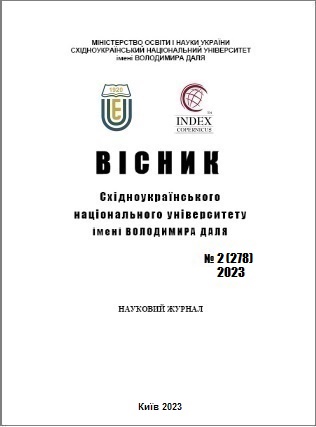Modern justification of directions of improving of efficiency of the system of management of circulating assets of manufacturing enterprise
DOI:
https://doi.org/10.33216/1998-7927-2023-278-2-78-83Keywords:
assets of the enterprise, curculating assets, non-current assets, current assets, circulating capitalAbstract
As a result of the influence of political, military, resource and energy factors, the current economic situation in Ukraine requires the constant improvement and maximum effective use of available corporate resources. The growth of political and economic risks requires business entities to have flexible mechanisms and, at the same time, a stable capital inflow system. Changing external conditions dictate new business rules. Nowadays, every hryvnia should bring some additional income. The effort to minimize financial support from operational activities is the most important factor in financial management, since the capitalization of assets is no longer a guarantee of efficiency. Circulating assets are the most liquid part of the company's capital, so the condition and effective use of assets in the current economic conditions play an important role. Therefore, when operating in the conditions of a market economy, business entities of Ukraine must ensure the optimal composition and condition of their circulating assets in order to respond to the needs of the market quickly and efficiently. So,the purpose of this article is to find out mechanisms for the implementation of directions for improving the efficiency of management systems of circulating assets of manufacturing enterprise. Based on the modern practice of financial analysis and the identification of possible sources of increasing their effective use, the authors have chosen several directions for increasing the efficiency of the circulating asset management system at the enterprise under study. Each of the proposed directions takes into account the peculiarities and specifics of the functioning of the manufacturing enterprise, the financial and resource potential, as well as the strategic directions of the work of a separate enterprise. In addition to directions, the authors also have created an algorithm for controlling the optimization of the level of receivables of a manufacturing enterprise. Reserves for further increasing in turnover and increasing in turnover ratio of curculating assets of the enterprise are proposed.
To solve the problem of unprofitability and a low level of profitability at the production enterprise, a number of operational tasks were developed, the basis of which was to improve the efficiency of the use of curculating assets..
References
1. Brealey Richard A., Myers Stewart C. Principles of Corporate Finance. 1996. McGraw-Hill College; Subsequent edition. 998 p.
2. Zvi Bodie, Robert Merton Finance 1st Edition. Prentice Hall.; 1st edition. 1999. 479 p.
3. Бланк І.О., Ситник Г.В. Управління фінансами підприємств : підруч. Київ. нац. торг.-екон. ун-т. Київ: КНТЕУ, 2006. 779 с.
4. Гоцуляк С.М. Деякі аспекти управління оборот-ним капіталом підприємства. Вісник соціально-економічних досліджень. № 41 (2). 2011. С. 38-44
5. Нашкерська Г.В. Бухгалтерський облік. К.: Центр навчальної літератури, 2004. 464 с.
6. Слав’юк Р.А. Фінанси підприємств: навчальний посібник. Луцьк: Ред.-вид. відд. «Вежа» Волин. держ. ун-ту ім. Лесі Українки, 2001. 460 c.
7. Філімоненков О.С. Фінанси підприємств: навч. посіб. К.: МАУП, 2004. 328 с.
8. Хохлов М.П., Щербань О.Д., Крилова М.А. По-няття оборотних активів підприємства. Інфра-структура ринку. Вип. 31. 2019. С. 409-414
9. Воробйов Е., Гриценко А., Соболєв В. Економіч-на теорія. Харків-Київ, 2007. 306 с.
10. Кнейслер О.В., Квасовський О.Р., Ніпіаліді О.Ю. Фінансовий менеджмент: підручник. Тернопіль: Вид-во «Економічна думка», 2018. 478 с.
11. Омельченко О.В., Янковий А.С. Сучасні підходи до трактування поняття «оборотні активи». По-дільський науковий вісник. 2022. № 3/4. С. 39-44.

